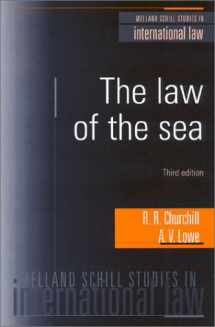
The Law of the Sea
Book details
Summary
Description
This new Third Edition has been completely revised and updated to cover the many developments that have occurred since publication of the second edition in 1988, among the most notable of which is the entry into force in 1994 of the UN Convention on the Law of the Sea. Written so as to be intelligible to all concerned with maritime affairs, the book has proved particularly valuable to international lawyers and those taking specialist courses in the law of the sea and maritime studies.
The aim of the third edition of this book remains broadly the same as that of the first two editions, namely to provide an introduction to the law of the sea, surveying not only the 1982 United Nations Convention on the Law of the Sea but also the customary and conventional law which supplements it.
Since the previous edition of this book was published in 1988, much has happened in the law of the sea. Most notably, the 1982 Convention has entered into force and is now widely ratified. In addition a number of important multilateral treaties have been concluded (including the two Agreements of 1994 and 1995 relating to the implementation of the Convention), there have been several judgments by international courts and tribunals, and there has been a vast amount of bilateral treaty-making, national legislation and other forms of State practice. This new edition has been completely revised and extensively rewritten, although the basic structure of the book remains unchanged.
This book is concerned with the public international law of the sea - that is to say, with the rules and principles that bind States in their international relations concerning maritime matters. Accordingly, it does not discuss, except incidentally, the rules of private maritime law, which concern such matters as marine insurance, carriage of goods by sea and maritime liens; nor does it provide a survey of the municipal law of the United Kingdom, or of any other country, relating to the law of the sea. Furthermore, it is concerned with the laws of peace and not with the matters that have traditionally been considered under the heading of the laws of war, and consequently topics such as maritime neutrality and prize law fall beyond its scope. Nonetheless, this leaves a considerable body of law within the purview of the book.
The treatment of the subject falls into two broad divisions. First, we take each of the major maritime zones recognized in contemporary international law, and explain the rules presently applicable to that zone against the background of the main stages of the historical development of those rules. Increasingly, however, the law of the sea is being developed along functional, rather than zonal, lines. For example, whereas the 1958 United Nations Conference on the Law of the Sea concentrated mainly on producing a framework of rules governing States' rights and duties in the territorial sea, continental shelf and high seas, many of the more recent international agreements have been concerned not with particular zones but with particular uses of the seas, such as pollution, fishing (which was in fact also the subject of one of the conventions produced by the 1958 conference) and navigation. We have, therefore, thought it necessary, in order to bring together the many rules of international law relating to the various uses of the seas, to provide separate surveys of each of the main activities carried out in the seas. These functional surveys appear in the later chapters of the book.
Although the international law of the sea is in principle limited in its application to States and other entities having interna


We would LOVE it if you could help us and other readers by reviewing the book
Book review



